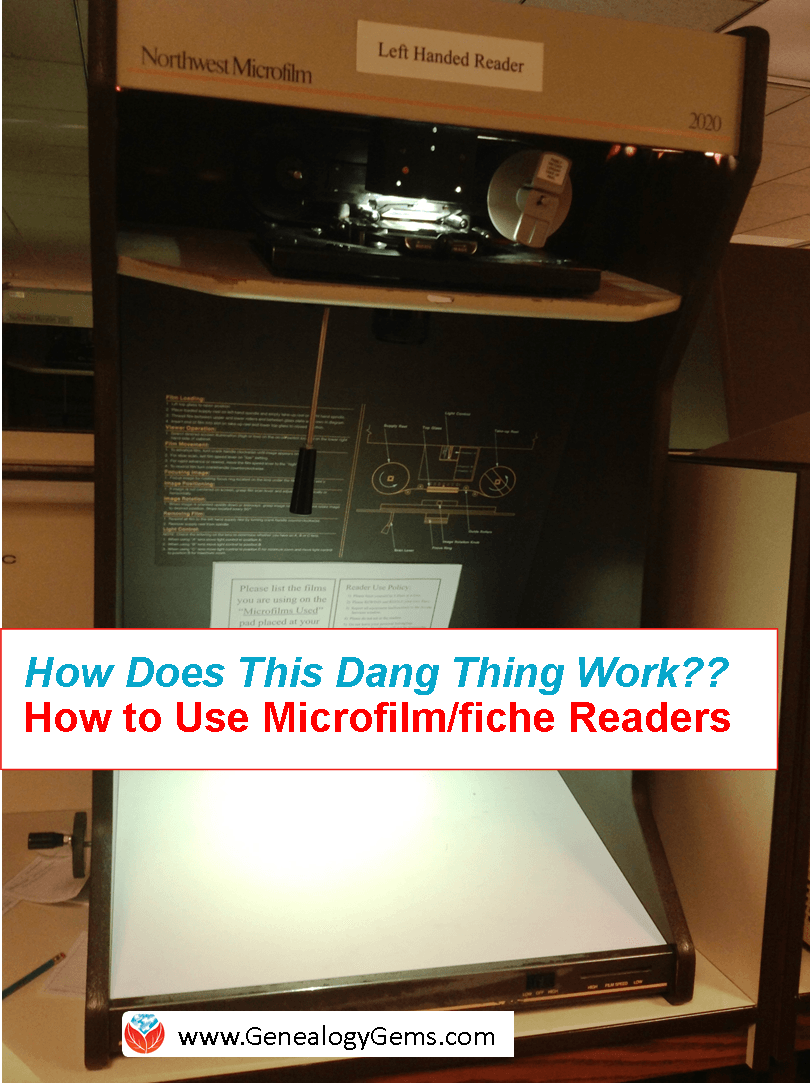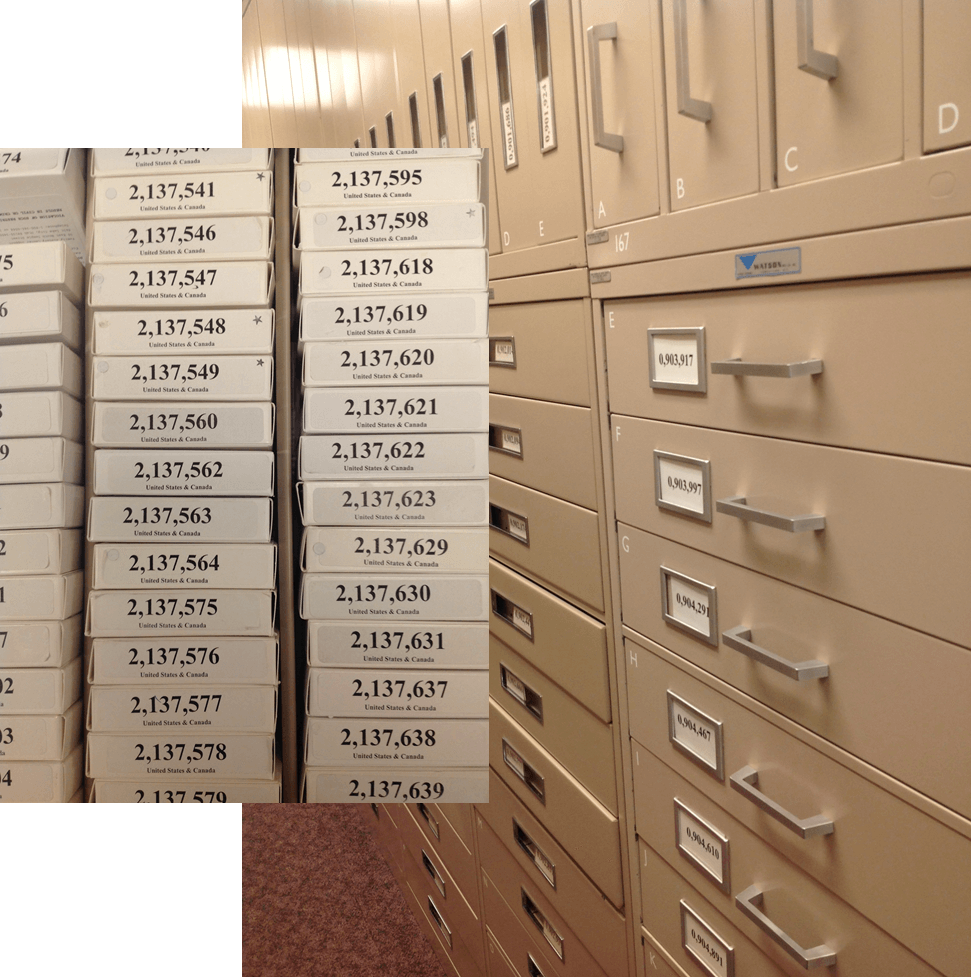Discover Your Dutch Ancestors & More in New Online Genealogy Records
Featured this week is a fantastic resource for anyone searching for Dutch ancestors! Open Archives recently celebrated reaching 200 million historical person entries and collaborates with dozens of libraries and genealogical societies to make them all available online...Use A Family History Center to Access the Family History Library
Those who just attended RootsTech 2014 probably wish they’d had more time for researching at the Family History Library. Others may have watched streaming sessions of RootsTech at satellite Family History libraries, called Family History Centers or FamilySearch Centers. Whatever the case, I’m guessing many of us wish we knew more about how to use the Family History Center (FHC) nearest us.
FHCs are great: they’re free, there’s usually one not too far from you, they are your personal portal to microfilmed content at the Family History Library, and you don’t have to be a member of the sponsoring LDS church. And as it happens, I’ve just republished a three-part series on FHCs from my original Family History: Genealogy Made Easy podcast. All three episodes feature longtime genealogy researcher Margery Bell, Assistant Director of the Oakland Family History Center in Oakland, California. Here’s a breakdown of topics covered in each episode. Click on each to see the episode webpage, where you can access the podcast and the show notes.
Episode 17: Introduction to Family History Centers, their local holdings and how to order and use microfilmed resources from the Family History Library.
Episode 18: How to prepare for a visit to a local Family History Center, subscription websites you can use for free while visiting, and making copies in all forms.
Episode 19: Educational opportunities available through Family History Centers and Margery’s 7 top tips for getting the most out of your visit. Bonus: Margery shares inspiring stories of genealogy serendipity that happens when researchers come together in person.
How to Use a Microfilm Reader or a Microfiche Reader
 Not sure how to use microfilm or microfiche readers? Watch these quick video tutorials before your next trip to the library!
Not sure how to use microfilm or microfiche readers? Watch these quick video tutorials before your next trip to the library!
Recently I heard from a Genealogy Gems Premium member who is digging in deep to her family history. But she confessed that she left the Oklahoma Historical Center in Oklahoma City “in tears because I really didn’t know what I was doing” with the microfiche machine and with microfilms.
I totally understand. Microfilm and fiche readers are not my favorite part of genealogy research, either. But despite the wealth of digitized records that continue to appear online, microfilm is going to be around for a while! FamilySearch and other publishers of microfilmed data (like state archives) do not have copyright permissions to digitize all their microfilmed materials. Even if they can get it, it’s going to take a long time to make that happen.
Meanwhile, we will continue to need microfilm and microfiche readers!
- Microfilm is a long reel of film (up to 125 feet, I’ve heard) that are essentially page-by-page photos of a document collection, book, newspaper, etc.
- Microfiche is a single sheet of film (about 4″ x 6″) that contains the same, only shrunk down so small you need a magnified reader to make sense of it.
These were standard technologies for duplicating records in the pre-digital era. The Family History Library in Salt Lake City alone has over 2.4 million rolls of microfilm. Yes, that’s million! (And yes, they will lend them out to a Family History Center or FamilySearch Library near you.)
To access these fantastic films and fiches, you will need to use microfilm readers and microfiche readers. It’s easy to walk into the library and think everyone knows how to use them but you. But that’s not true. In fact, every single genealogist has had to face their first encounter with a reader. Don’t be shy about asking politely for a tutorial (and help when you do it wrong and something gets stuck). And don’t be shy about watching these tutorials on YouTube before you go to the library again:
How to Use a Microfilm Reader:
How to Use a Microfiche Reader:
As you can see, YouTube is a fantastic place to pick up essential genealogy skills! Click here to check out our more great ideas for using YouTube for family history.
More Beginning Genealogy Tips from Genealogy Gems
4 Beginning Genealogy Answers to Get You Started
6 Sources That May Name Your Ancestors’ Parents
Try These Two Powerful Tools for Finding Genealogy Records Online: Google and FamilySearch Wiki
Genealogy Gems Book Club: More Recommended Reading
Looking for something good to read? The Genealogy Gems Book Club passes on four titles recommended by RootsTech attendees.
We met so many avid readers at the Genealogy Gems Book Club Open House at RootsTech 2016! Several of them recommended some of their favorite books they thought other genealogists would enjoy: books about family relationships, history, identity and similar themes. Here’s a short list I wanted to pass along to you:

Finding Samuel Lowe: China, Jamaica, Harlem, a memoir by Paula Williams Madison about the author’s journey into her family history, which resulted in a documentary by the same name. “Spanning four generations and moving between New York, Jamaica, and China, [this] is a universal story of one woman’s search for her maternal grandfather and the key to her self-identity.” The author was one of the keynote speakers at RootsTech. This was recommended by Alexis, who won our Genealogy Gems Book Club door prize (a free Genealogy Gems Premium website membership, so she can listen to the full author interviews!).
The Forgotten Garden, a novel by the international best-selling author Kate Morton. The premise of the story was apparently inspired by Kate’s own family history. It’s described as follows: “A tiny girl is abandoned on a ship headed for Australia in 1913. She arrives completely alone with nothing but a small suitcase containing a few clothes and a single book—a beautiful volume of fairy tales. She is taken in by the dockmaster and his wife and raised as their own. On her twenty-first birthday, they tell her the truth, and with her sense of self shattered and very little to go on, ‘Nell’ sets out to trace her real identity.”
The Last Midwife: A Novel by Sandra Dallas, the story of the only midwife in a small Colorado mining town on the Rocky Mountain frontier. Gracy has delivered hundreds of babies, but then a baby is found dead and Gracy is accused as murderer. She’s kept lots of people’s dark secrets over the years–and a few of her–and as the trial looms, she has to decide which of those secrets to give up in order to clear her name.
 Finally, here’s one last reminder to savor Orchard House: How a Neglected Garden Taught One Family to Grow by Tara Austen Weaver, the current featured book of the Genealogy Gems Book Club. In the next episode of the free Genealogy Gems podcast, you’ll hear a snippet of our interview with Tara Weaver. Next month, Genealogy Gems Premium website members will be able to hear the entire interview with Tara on the Premium podcast.
Finally, here’s one last reminder to savor Orchard House: How a Neglected Garden Taught One Family to Grow by Tara Austen Weaver, the current featured book of the Genealogy Gems Book Club. In the next episode of the free Genealogy Gems podcast, you’ll hear a snippet of our interview with Tara Weaver. Next month, Genealogy Gems Premium website members will be able to hear the entire interview with Tara on the Premium podcast.
 Are you a reader? Want some more great recommendations? Want to hear some fantastic interviews with the authors of books we’ve covered in the past? Click here to learn more about the Genealogy Gems Book Club.
Are you a reader? Want some more great recommendations? Want to hear some fantastic interviews with the authors of books we’ve covered in the past? Click here to learn more about the Genealogy Gems Book Club.



